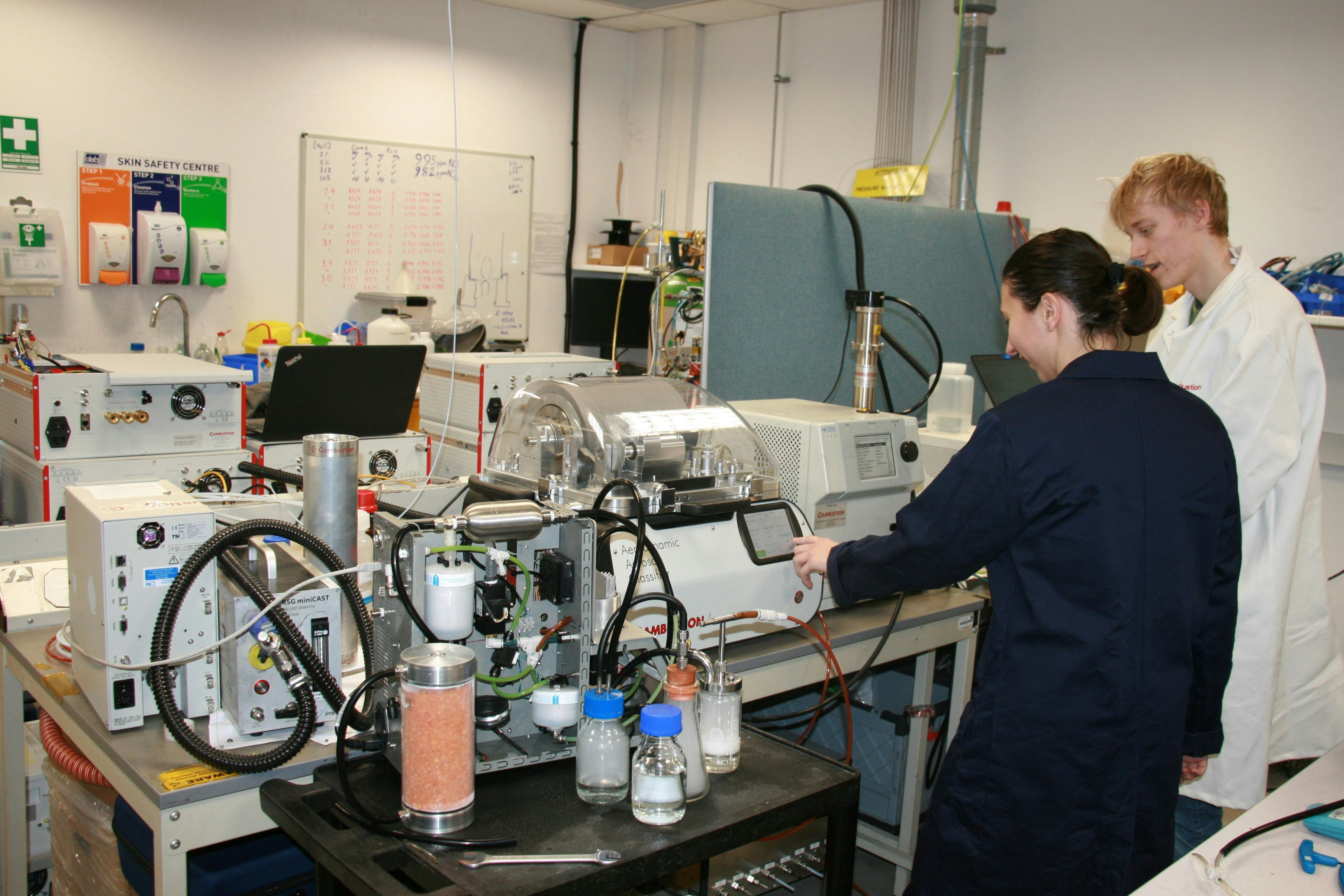Aerosol Science Consultancy
Cambustion has decades of experience in the field of aerosol science, gained from our in-house research and development of high quality sophisticated aerosol instrumentation all the way from conception to deployment in many fields and applications.
Our degree and PhD qualified scientists and engineers understand the complex processes involved in the formation, transport, emission, filtration and measurement of aerosols.
We have well equipped aerosol science laboratories with both our own and third party industry standard instrumentation, much of which is also field deployable.
Our scientists are equally ready to either perform testing in accordance with a customer specified test protocol, or to work with customers to advise and develop appropriate procedures. Either the raw data can be delivered for customer analysis, or we can produce analysis and reporting to support customer needs. We work either in our own labs or at customer sites according to user preference
Services include (but are not limited to):
Measurement of particle number (for example, using condensation or optical particle counters)
Measurement of particle mass and mass distributions using gravimetric filter paper, M²AS, CPMA and proxy instruments
Measurement of particle size distributions in the nano and micron size ranges for example using SMPS™, DMS500 or M²AS for mobility size, or AAC for aerodynamic diameter
Ambient measurements, both indoor and outdoor, including dispersion and the effectiveness of filtration and ventilation
Measurement of combustion aerosols (including from vehicles)
Generation of test aerosols including liquid, solid and volatile by nebulisation, combustion, condensation or agitation, both polydisperse and monodisperse (size classified)
Characterisation of filter media for filtration efficiency, including precise measurements of size-resolved particle penetration (e.g. for air filters conforming to ISO 29463)
Investigation of electrostatic effects on aerosols (charging, charge measurement, neutralisation, electrophoresis)
Instrument calibration for size (against standard PSL spheres or aerosol classifiers), number (against aerosol electrometers or CPCs) or mass concentration (using CERMS)
Thermogravimetric analysis (TGA)
For a case study looking into the filtration of particles from 3D printers for a customer, see our blog.
Need more information? Connect to an expert
